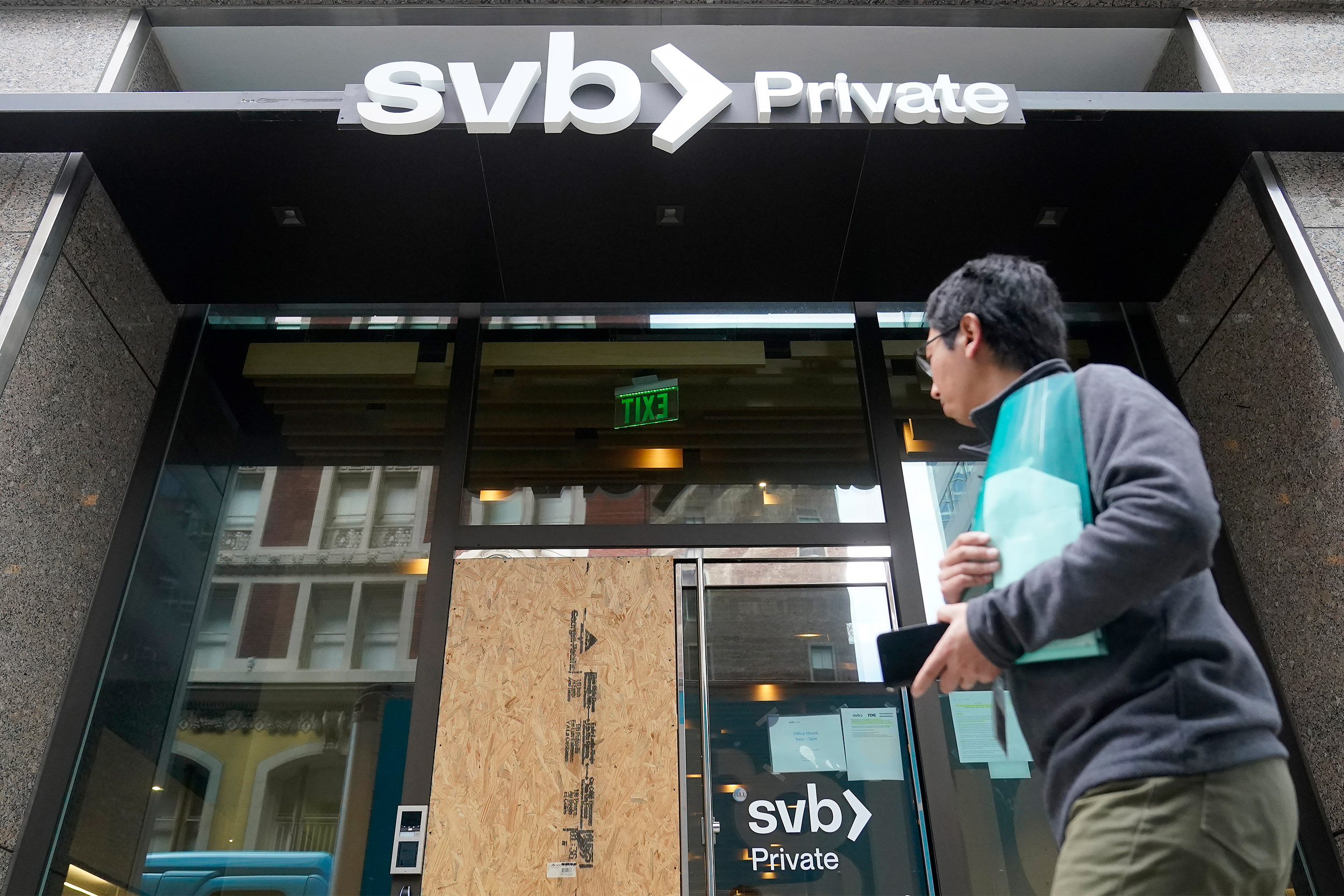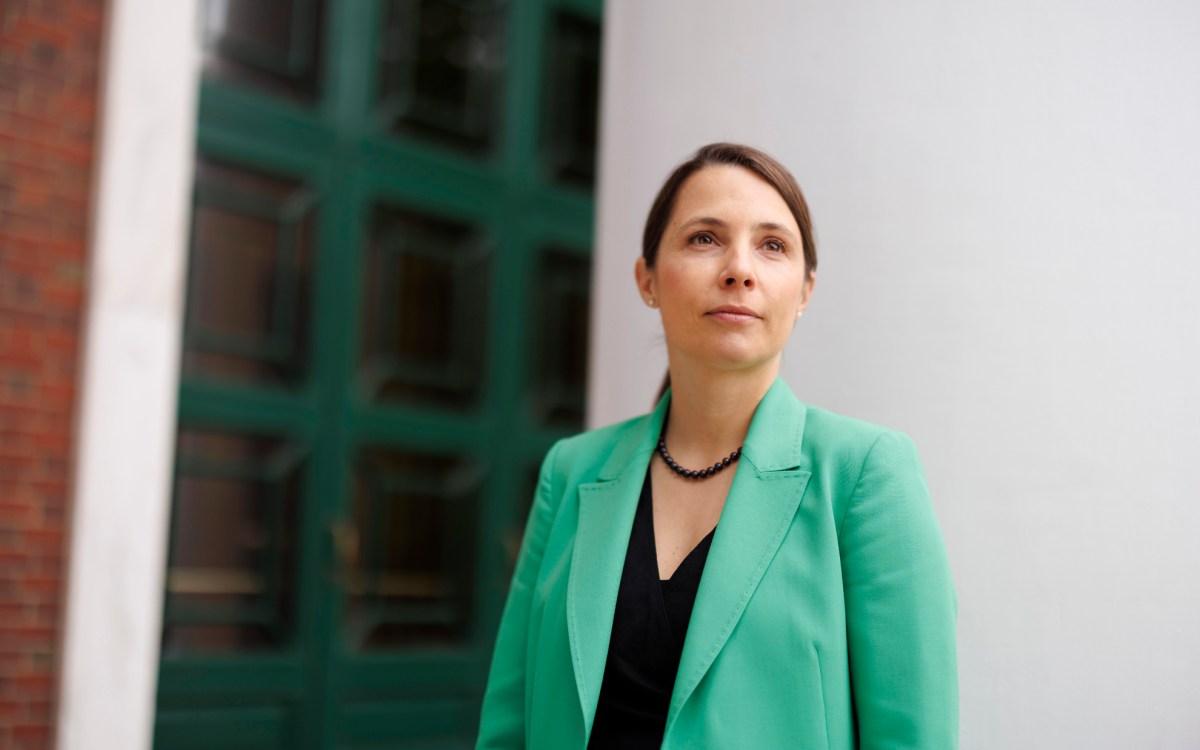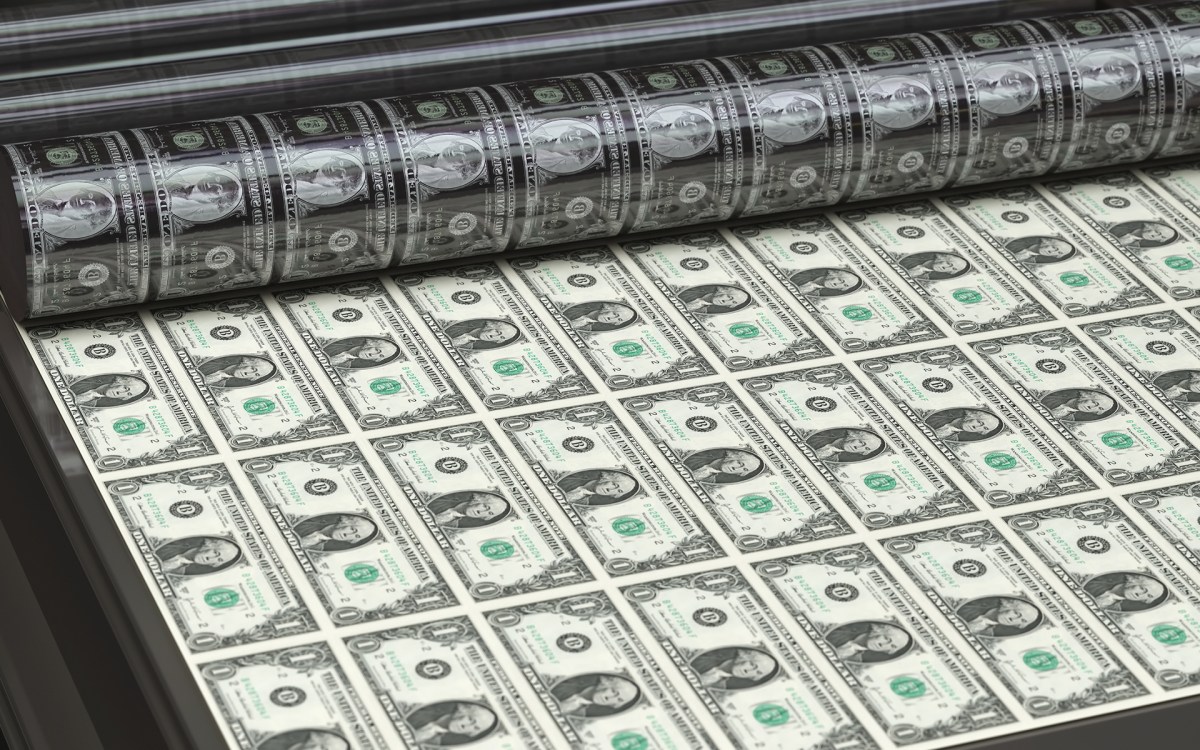
A closed branch of SVB in San Francisco. As the primary regulator of the bank, the Federal Reserve is coming under sharp criticism from financial watchdogs and banking experts.
AP Photo/Jeff Chiu
Bailouts for everyone?
Law School professor who served as Fed regulator talks moral hazard, implications for inflation after SVB collapse rocks Washington and Wall Street
In recent days, federal regulators have taken dramatic steps to stabilize financial markets, protect depositors from ruin, and prevent more bank failures following the collapse of Silicon Valley Bank and a handful of other small, tech-focused institutions.
The measures by the U.S. Treasury, the Federal Reserve Board, and the Federal Deposit Insurance Corporation seem to have calmed the waters — for now. But the failures have raised questions about how banks servicing tech- and investment-savvy clientele could plunge so quickly and precipitously. The Justice Department, the Securities and Exchange Commission, and the Federal Reserve have all pledged to open investigations.
Critics say these banks sought and got relief in 2018 from federal regulations designed to prevent the very conditions that led to their failure and worry that a bailout will incentivize other banks to act rashly and expect similar treatment in the future.
To better understand what’s going on, the Gazette spoke with Daniel Tarullo, Nomura Professor of International Financial Regulatory Practice at Harvard Law School. From 2009 to 2017, he was a member of the Federal Reserve Board and the Federal Open Market Committee, which sets interest rates for commercial banks. As oversight governor for supervision and regulation, he led the board’s financial regulatory reforms, including implementation of the 2010 Dodd-Frank Act. The interview has been edited for clarity and length.
Q&A
Daniel Tarullo
GAZETTE: There’s been a lot of finger-pointing. Who is to blame for these bank failures?
TARULLO: Whether this was a regulatory failure or a supervisory failure or both remains to be answered, to some degree, but I think we can be reasonably confident there was at least a supervisory failure. In the case of Silicon Valley Bank, the supervisors at the Federal Reserve Bank of San Francisco did not see the problem coming, presumably had not looked at the liquidity situation and the potential problem with Treasury securities that had lost value. Was that strictly the failure of the San Francisco Fed? Or were they acting under the guidelines they had been given by the Board of Governors in Washington? I ask that because over the last several years, there was a message sent to supervisors that they were not supposed to be as strict and stringent with their banks as they had been.
GAZETTE: Was that message tied to the 2018 rollback of Dodd-Frank or a separate issue?
TARULLO: The supervision is a separate issue. Debate is swirling around how much difference the 2018 legislation, and then the Federal Reserve’s implementation of that legislation, in 2019, made. As best as I can determine, there was one potential point that may have made a difference, not in the legislation, but in the changes that the Fed itself made. But it doesn’t appear that change was directly responsible for the problems. I do think that that set of changes reflected a relaxation of regulation across the board by the Fed, which probably did contribute to the problems we have seen over the past week.
GAZETTE: Are the FDIC, Treasury, and the Federal Reserve taking appropriate steps to stabilize the banking industry?
TARULLO: We’ll see. Yesterday it didn’t look as though that was the case. Now, midday on Tuesday, things have calmed down. In these kinds of situations, sometimes there’s a pause and then things get worse again. Sometimes there’s a pause and things kind of stabilize. We just don’t know where we are right now. The Fed and the FDIC and the Treasury took, on a very ad hoc basis, a set of steps they felt they needed to take to stop a further run on other banks — providing guarantees for uninsured depositors, and making quite favorable terms for Fed funding available to other banks that may have put themselves in a vulnerable position. It was an appropriate if unfortunate response — unfortunate in its implications for policy going forward, but appropriate in that the Biden administration and the banking agencies did not want to take big risks with the banking system.
GAZETTE: Is the FDIC’s guarantee of deposits above its standard $250K maximum a move that may ultimately prove a Pandora’s box, if everyone expects similar treatment in the future?
TARULLO: In the middle of a crisis, regulators, supervisors, and the president cannot worry too much about moral hazard. Look what happened when the government paused over the moral hazard question with Lehman Brothers in the fall of 2008 — its failure set off the most acute phase of the financial crisis. But once things have stabilized, the recognition that there is a significant moral hazard out there requires a regulatory response, and that’s what we’re going to get. What the nature of that regulatory response is will depend on what regulators have concluded about how widespread the problem was. But they’re going to have to face the fact that uninsured depositors are now going to believe, ironically, that if they have an uninsured deposit in a bank with lots of uninsured deposits, they’re pretty likely to be bailed out. Under our current system, that’s not the kind of incentive you want big depositors to have.
One other thing we’ve learned is that the promise that we can enforce market discipline by resolving banks when they become bankrupt and allocating the losses, as the law says you should — that’s just illusory. SVB was the 16th-largest insured depository institution in the country. This was not JP Morgan, this was not Citi, this was not Bank of America. Within 48 hours, the government concluded that it couldn’t afford to have losses allocated to those uninsured depositors and took extraordinary steps to protect them. People are now going to have to face the fact that the assumptions laid out in the legislation about what the resolution process can do just don’t hold when the heat is on.
GAZETTE: Is the failure of SVB indicative of a broader problem in the banking industry?
TARULLO: The stress we’ve seen has been concentrated in banks with some combination of the following characteristics: First, their business is heavily dependent on an industry or sector that is not performing as well as the rest of the economy right now — tech and crypto, in particular. Second, they hold a portfolio of Treasury securities that were not, under current regulations, required to be marked-to-market, meaning to realize the losses that have resulted because interest rates have gone up. Third, and perhaps most important, they had very high proportions of deposits that were uninsured, large amounts of money they knew was not protected by the FDIC. Thus, when there was a whiff of a problem, depositors pulled money out as quickly as they could.
GAZETTE: Given the role that sharply rising interest rates appears to have played in SVB’s collapse, does that suggest the Fed’s money-tightening approach is not working as planned?
TARULLO: The inflation figures Tuesday morning probably gave people at the Fed pause. They came in a little higher than people had anticipated. The real question is not whether the Fed’s policy is working — it is tightening financial conditions, but is it tightening them so quickly that banks do not have time to adjust? Clearly, many businesses, many financial firms, and many individuals and households have taken hits on their portfolios of fixed-income securities. The Fed should have been asking, as they raised rates so rapidly, what kind of vulnerabilities might there be in banking and other parts of the financial sector. But they probably almost exclusively focused on inflation.
GAZETTE: Does this situation, along with Tuesday’s inflation numbers, complicate the Fed’s path forward on inflation?
TARULLO: Absolutely. They have a Federal Open Market Committee meeting next week. Here’s the tension: On the one hand, to the degree that there’s uneasiness with respect to banks, any further increase would exacerbate problems with the depreciation and value of long-dated securities that banks already hold. On the other hand, if they don’t go forward with at least a modest rate increase, markets again begin jumping to the conclusion that the Fed is going to stop raising rates. Then financial conditions will begin to loosen, and as a result, it may be harder for the Fed to achieve its inflation target. This is going to be a very delicate decision for the Fed next week.





